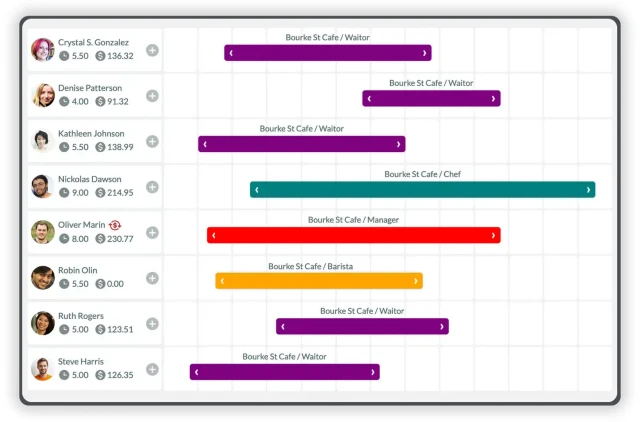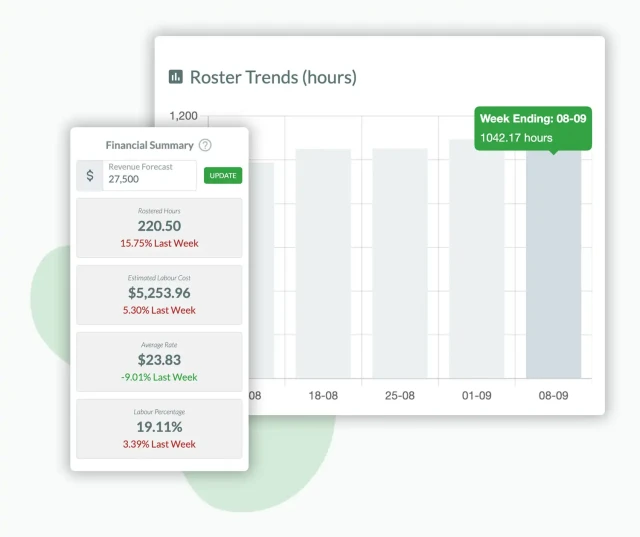






Read what our clients have to say about us
See all reviewsA WFM tool helps create efficient schedules, balancing workloads and ensuring the right staff are in place to meet demand, reducing overtime and under-staffing.
Streamline data entry and reduce errors with automated processes for tracking hours, leave, and shifts, improving overall accuracy in workforce management.
Gain immediate access to real-time data on staff performance, attendance, and scheduling, enabling quick decision-making and adjustments to stay on track.
Monitor labor costs and track productivity with detailed reporting, helping you stay within budget and maximise operational efficiency
Ensure adherence to labor laws and company policies with automated compliance tracking and documentation, reducing the risk of legal issues and penalties.
Facilitate better communication and transparency with employees through easy-to-use scheduling and leave request features, boosting morale and job satisfaction.

Workforce management software questions? We have the answers